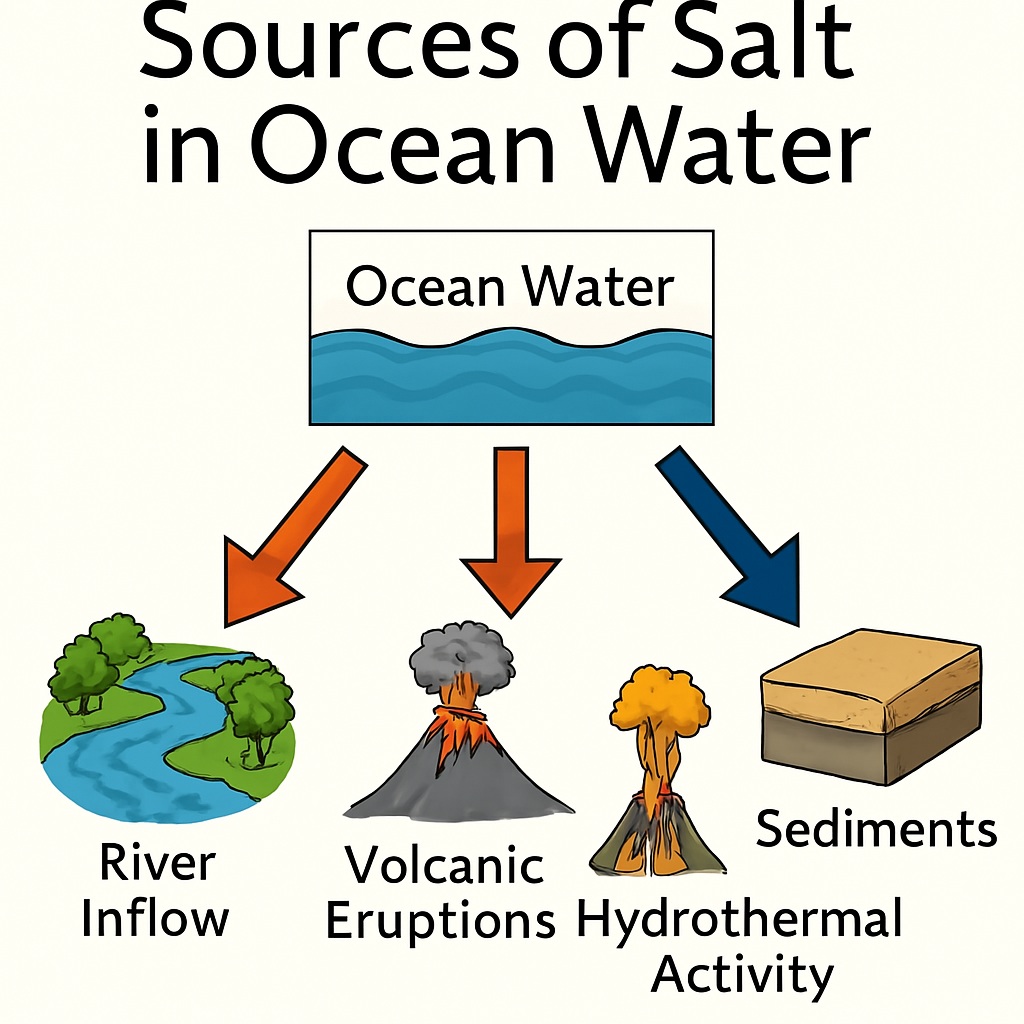The salt budget of the ocean refers to the balance between the addition and removal of salts in ocean water over time. While the ocean is constantly undergoing changes due to various natural processes, its average salinity has remained relatively stable for millions of years. This balance is maintained through a dynamic system where salts are both introduced into and removed from the ocean, ensuring long-term equilibrium.

Table of Contents
Sources of Salt in the Ocean
Salts enter the ocean through various natural processes. The most significant source is continental weathering. When rainwater falls on rocks on land, it reacts with minerals and dissolves various salts such as sodium, chloride, calcium, potassium, and magnesium. These dissolved salts are carried by rivers and streams into the ocean.
Another source is volcanic activity, both on land and beneath the sea. Underwater volcanoes and hydrothermal vents release large amounts of minerals and salts directly into the ocean. Atmospheric deposition, including dust and volcanic ash, also contributes small quantities of salts to the sea.
Processes that Remove Salt from the Ocean
Despite the continuous addition of salts, ocean salinity remains relatively constant due to several removal processes. One of the main mechanisms is the formation of evaporite deposits. In shallow seas or lagoons with high evaporation rates, dissolved salts can crystallize and settle to the ocean floor, forming salt beds.
Biological activity also plays a role. Marine organisms use certain elements such as calcium and silica to form shells and skeletons. When these organisms die, their remains sink to the seafloor and become part of the ocean sediments, effectively removing some salts from the water.
Adsorption onto clay particles and their subsequent burial in sediments is another way salts are removed. Additionally, hydrothermal reactions at mid-ocean ridges can trap certain ions in newly forming oceanic crust.
Balance and Stability of the Salt Budget
Although salts are continuously added and removed, the overall salt content of the ocean remains in balance. This is because the rate of input is roughly equal to the rate of removal. The entire salt content of the ocean is recycled very slowly, with some salts remaining in the ocean for millions of years. This recycling and slow turnover result in a stable average ocean salinity of about thirty-five parts per thousand.

Importance of the Salt Budget
The salt budget of the ocean has important implications for Earth’s systems. Salinity affects the density of seawater, which in turn influences ocean currents and global heat circulation through thermohaline processes. It also plays a crucial role in the distribution of marine organisms, many of which are sensitive to changes in salinity. Understanding the salt budget helps scientists monitor long-term changes in ocean chemistry, which can be influenced by climate change and human activities.
Human Impact on Ocean Salinity
While the natural salt budget is largely balanced, human activities can disturb this equilibrium. For example, dam construction and water diversion reduce river flow into the sea, altering the amount of freshwater and dissolved salts entering the ocean. Pollution, including agricultural runoff and industrial waste, can also introduce new salts and chemicals into marine environments. In polar regions, melting glaciers and sea ice due to global warming dilute ocean water, affecting local salinity levels and circulation patterns.
Conclusion
The salt budget of the ocean is a finely balanced system that regulates the salinity of seawater and supports the functioning of marine and climatic systems. Through a natural cycle of salt addition and removal, the ocean maintains a relatively constant salt concentration over geological time. However, this balance can be influenced by both natural events and human activities, making it essential to monitor and understand the processes involved in the salt budget.